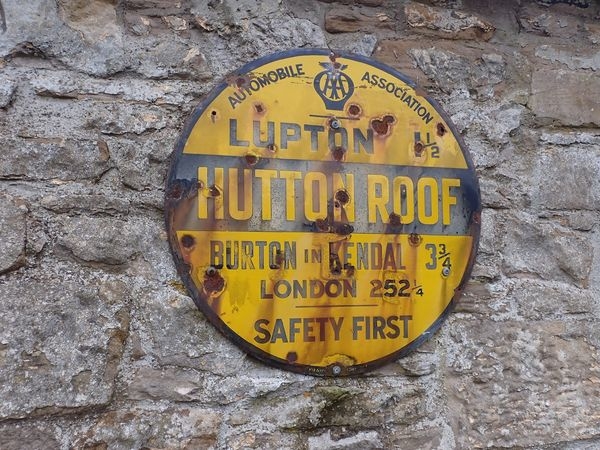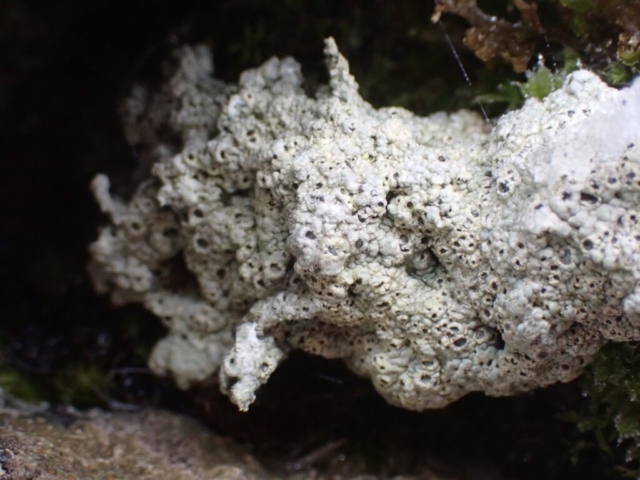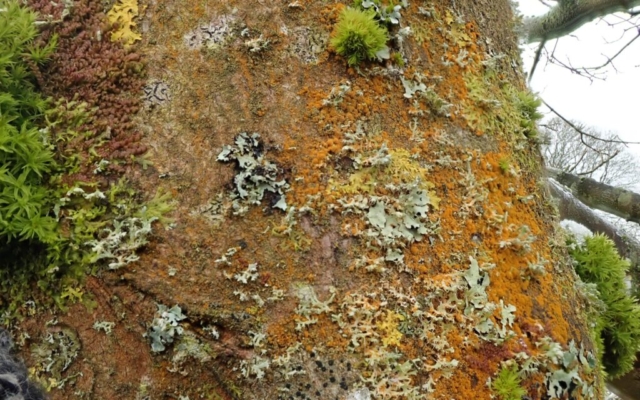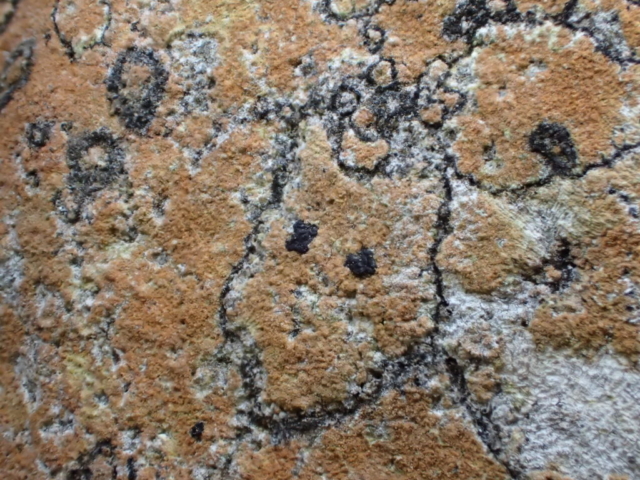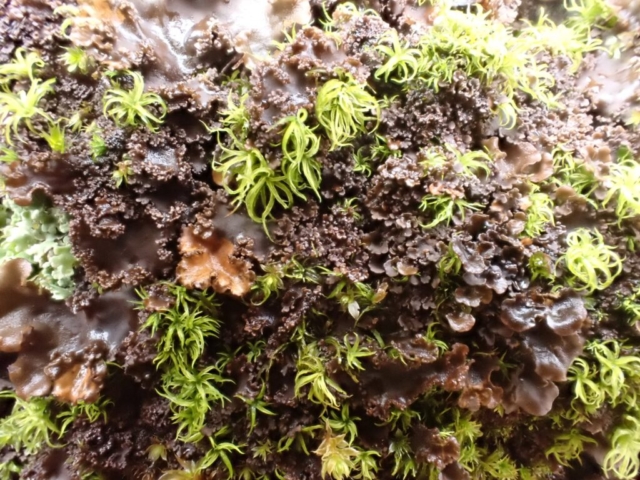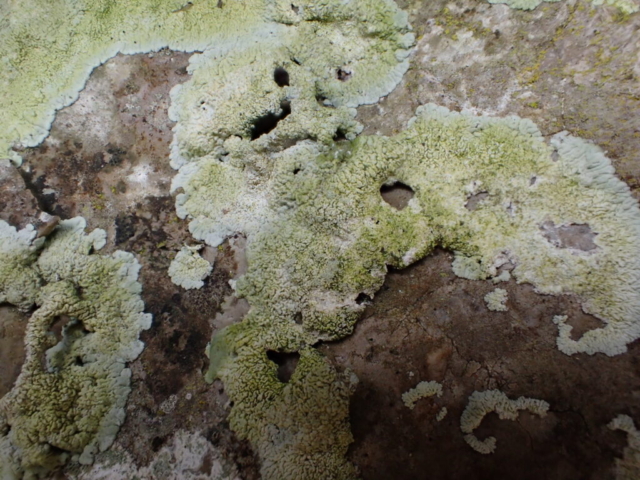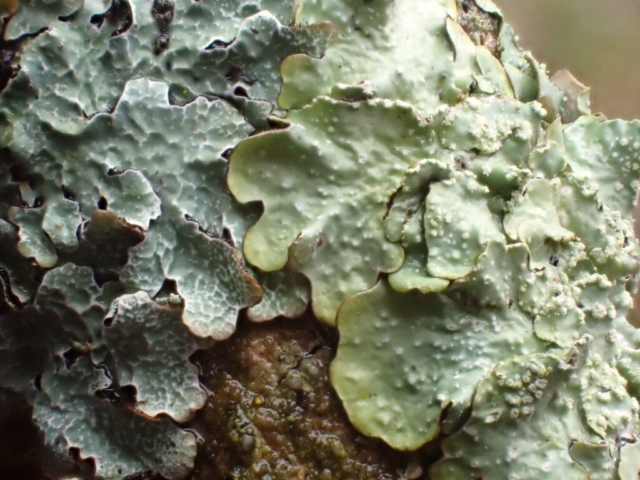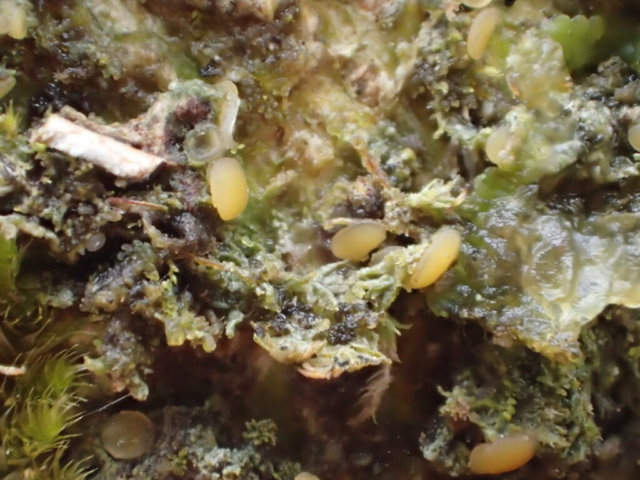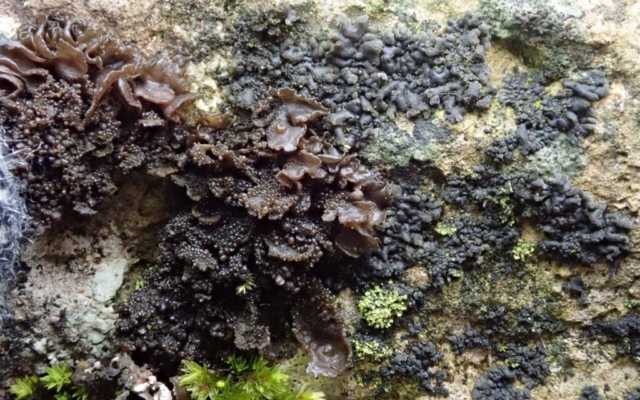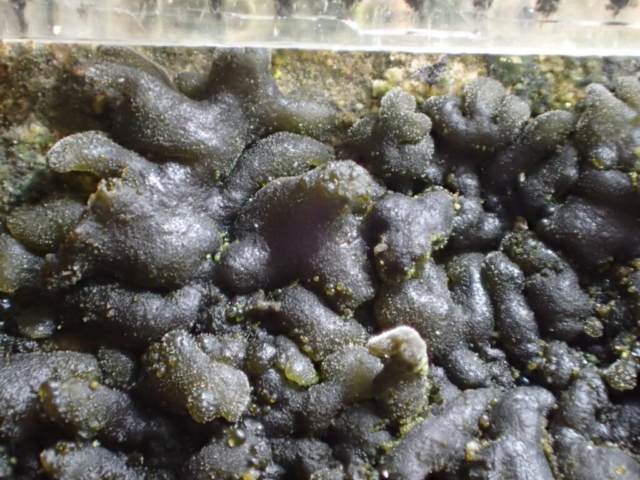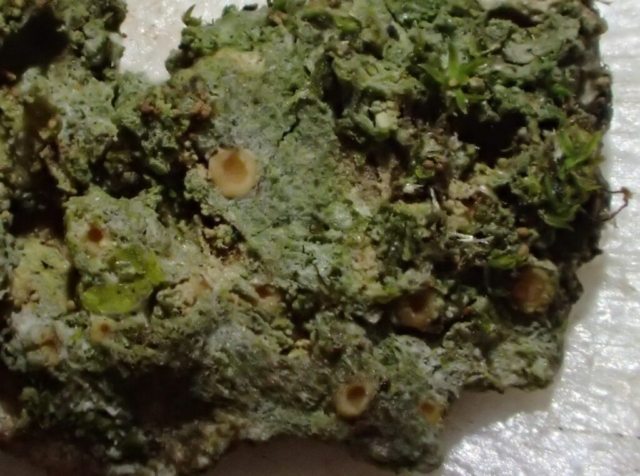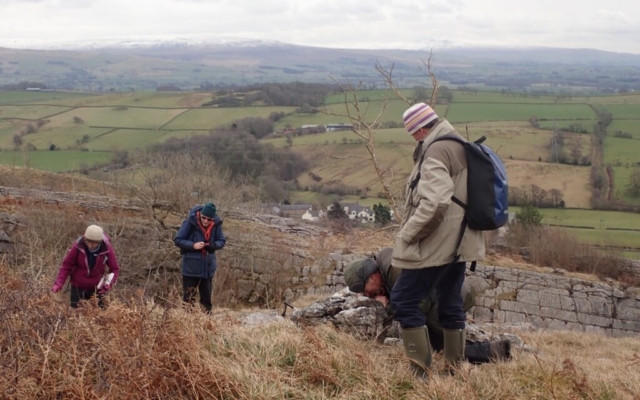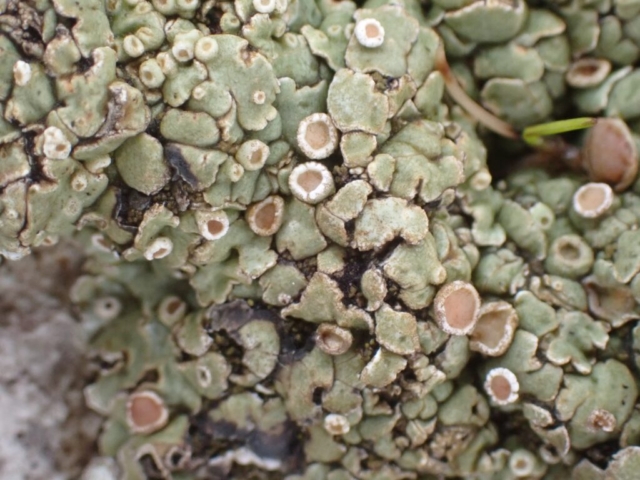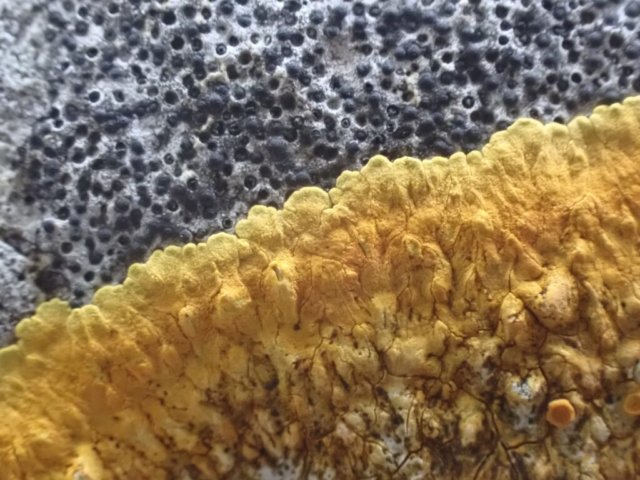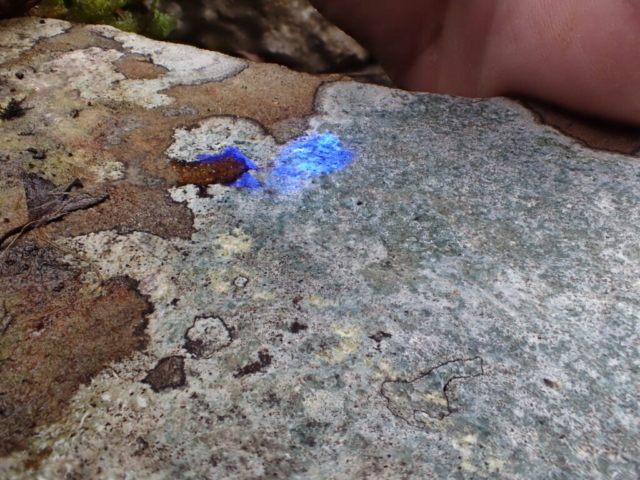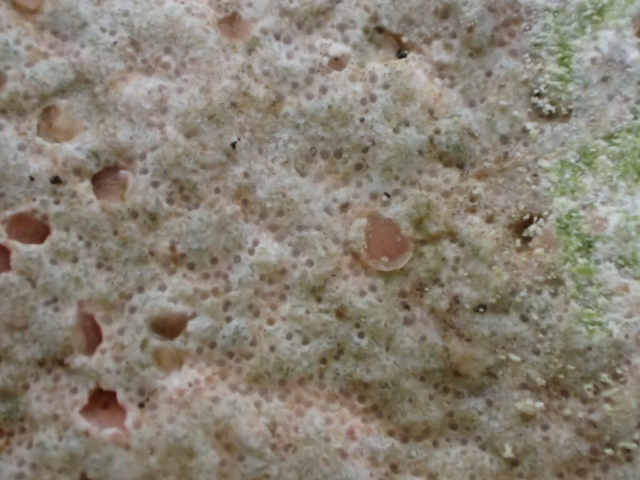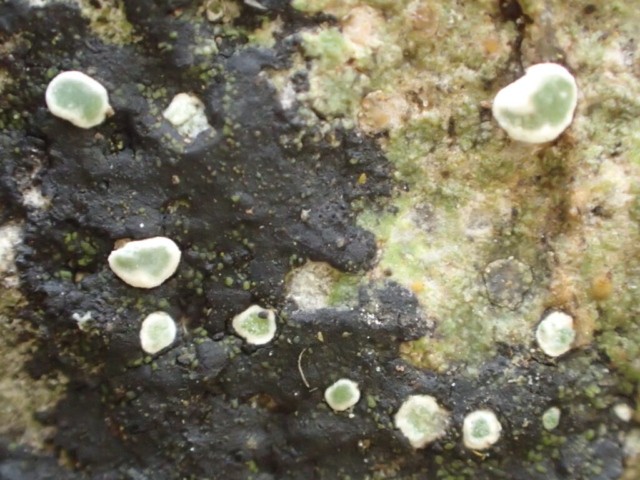Ten folk braved the March snow to look at lichens near Hutton Roof this week. And there were half a dozen for the bryo option: this looking at small things is getting popular! Right on the wall by the meeting point in the village was Diploschistes muscorum, a crusty species that has the white-with-a-yellow-tinge crust of its commoner cousin Diploschistes scruposus, and the hollowed out apothecia too. But D. muscorum is parasitic on Cladonias (particularly on limestone in my experience). It seems to smother them, covering the podetia in a white blanket. And then eat them up before moving on to the mosses.
A short distance up the lane we found a limestone wall to occupy us for half an hour or so: Caloplaca flavescens, Diploicia canescens, Acrocordia conoidea and other typical species. The odd silicious rock had Parmelia saxatilis, Rhizocarpon geographicum and Opegrapha gyrocarpa to make them stand out. And then it was on to the Ash trees: with a lot of Physcia adscendens and Lecidella elaeochroma to discuss. Adjacent Punctelia subrudecta and Parmelia sulcata thalli gave good illustrations of their different pseudocyphellae: points versus lines. Bubbling Curlews and screeching Jays provided an interesting soundtrack.
And then there was an outcrop: Dermatocarpon miniatum as big as (small) elephants’ ears; bubbling thalli of Collema (now Lathagrium) auriforme and an unfamiliar tiny jelly lichen whose proportionally long extended lobes were pruinose at the tips. We discovered later that it is Scytinium (was Collema) fragile, confirmed by Brian Coppins. A well camouflaged moth was disturbed- initial investigations suggest Ectropis crepescularia – The Engrailed. Nearby walls had frilly Peltigera praetextata; the ash tree above had Pertusaria leioplaca and a couple of specimens – intriguing white apothecia, and one that turned out to be Gyalecta truncigena.
We pushed on through the Hazel woods. A real-life Coenognium (was Dimerella) lutea was compared with the front of Dobson. Pseudoschismatomma (was Opegrapha) rufescens was seen on an ash. We lunched on the limestone pavement of the Rakes, with Blue Moor Grass (Sesleria caerulea) at our feet and a snowy Ingleborough in view. Typical limestone outcrop species were quickly found: Squamarina cartilaginea; Petractis clausa; Collema cristatum etc. Protoblastenias were discussed. Was that a colour change with K or not? Could it be P. lilacina?
Higher up on the outcrops we found some beautiful rosettes of Caloplaca aurantia, the flat lobe ends contrasting nicely with the nearby convex ones of Caloplaca flavescens. We debated saxicolous Opegraphas, found Dermatocarpon luridum in a karren (non-geomorphologists might call it a runnel) and demonstrated the K/UV purple reaction of Porpidia tuberculosa on an erratic. We failed to find Solorina saccata. Maybe next time.
It began to rain, so headed down, though were delayed for a while by a wall with Lecidella scabra, Baeomyces rufus, Leptogium gelatinosum and a mysterious greeny C+ red crust with small white features. Is it young Trapelia coarctata? Somewhat eerily, we emerged onto the road just as the bryo party arrived from the other direction: perfect timing for a post-trip debrief. We found 90 or so species, all learnt at least something, and there’s samples to occupy us over the next few days. But we have barely scratched the surface of Hutton Roof…
Text: Pete Martin. Photos: Caz Walker, Chris Cant, Geoffrey Haigh, Pete Martin

